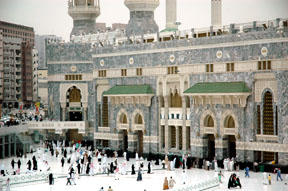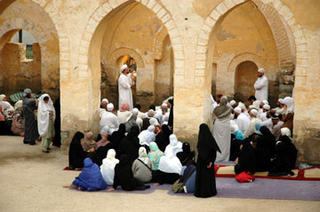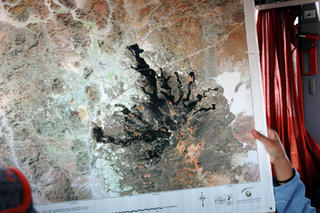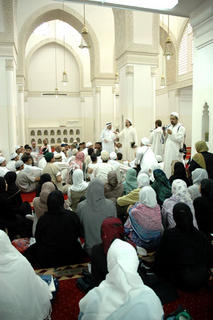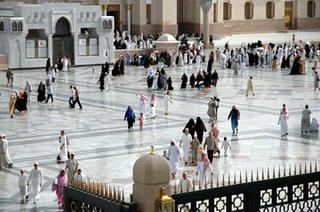We are on our way to Taif and our bus has just broken down in the middle of nowhere (or rather, at a gas station in the desert, in the middle of nowhere). Many of us came back to the hotel after Fajr, after having done
umrah, and went straight to bed, thus missing both breakfast and lunch. I woke up at Dhur time with about 20 minutes to shower, get dressed, pray and board the bus for our trip to Ta'if. We aren't going to return to Makkah until Maghrib (or well after if our past trips are any guide) and many of us are starting to feel hungry. I have been among the lucky few able to snack on an apple, but I am still feeling weak and wilted.
Alhumdulillah, it makes me think of Rasoolallah (صلي الله عليه و سلم) and how there were times when all he had to eat were a handful of dates. The way I am feeling now, I could never gather enough energy to walk around outside in the desert heat for long, much less walk to Badr or battle or lead an army or fight like he, Rasoolallah (صلي الله عليه و سلم) did - on a handful of dates, no more.
Subhanallah, where did his strength come from? How was he (صلي الله عليه و سلم) and the sahaba (ra) able to remain not only patient but active in their struggle to establish Islam even while having eaten so little? Just being on this bus, air conditioned and comfortable is still a bit of a hardship for me because of the hunger - and I've had an entire apple and just need to sit here in comfort.
If I had gone to Taif like he (صلي الله عليه و سلم) did, hungry, tired and weary from the heat, and had been treated like he (صلي الله عليه و سلم) was stoned and chased out of town like some detestable vermin, I would have either broken down crying and tried to quit, or made an entirely different du'a that what he (صلي الله عليه و سلم) did.
Even when he was bleeding and chased by people whom he (صلي الله عليه و سلم) had really thought may have been receptive to Islam, even then he (صلي الله عليه و سلم) was so patient. And not only patient but forgiving and compassionate. Anyone, if they try hard enough can succeed in being patient but it takes something extra, something more, to be compassionate and forgiving as well.
Everytime I hear about the Taif story, I wish that I could have been there to comfort Rasoolallah (صلي الله عليه و سلم) and to tell him that I am living proof of the fact that his (صلي الله عليه و سلم) mission would succeed - to do what I could to ease his (صلي الله عليه و سلم) sorrow and pain. But I can't travel back in time and hug Rasoolallah (صلي الله عليه و سلم) or say any words of comfort. All I can do is hope that one day, Insha'Allah, I'll be able to him and see him (صلي الله عليه و سلم) smile with joy as crowds upon crowds upon crowds of his (صلي الله عليه و سلم) ummah enter Jannah.
Insha'Allah Ameen.But until then, I have to remember that the path to that moment, that meeting lies in the here and now, on this bus, with me being patient and thankful for the apple I was blessed with.
Alhamdulillahi Rabbil 'Alameen.
Feiza Naqvi
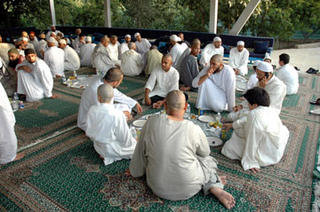 Photo: A welcome meal, Taif-style. And raiding the blackberry bush in the adjacent garden. © Fareena Alam. Please do not re-use without permission and proper credit.
Photo: A welcome meal, Taif-style. And raiding the blackberry bush in the adjacent garden. © Fareena Alam. Please do not re-use without permission and proper credit. While we waited, we explored the garden and were granted permission to raid a gorgeous blackberry plant. Oh the fruit was so full of flavour! We couldn't stop eating from it.
While we waited, we explored the garden and were granted permission to raid a gorgeous blackberry plant. Oh the fruit was so full of flavour! We couldn't stop eating from it.



